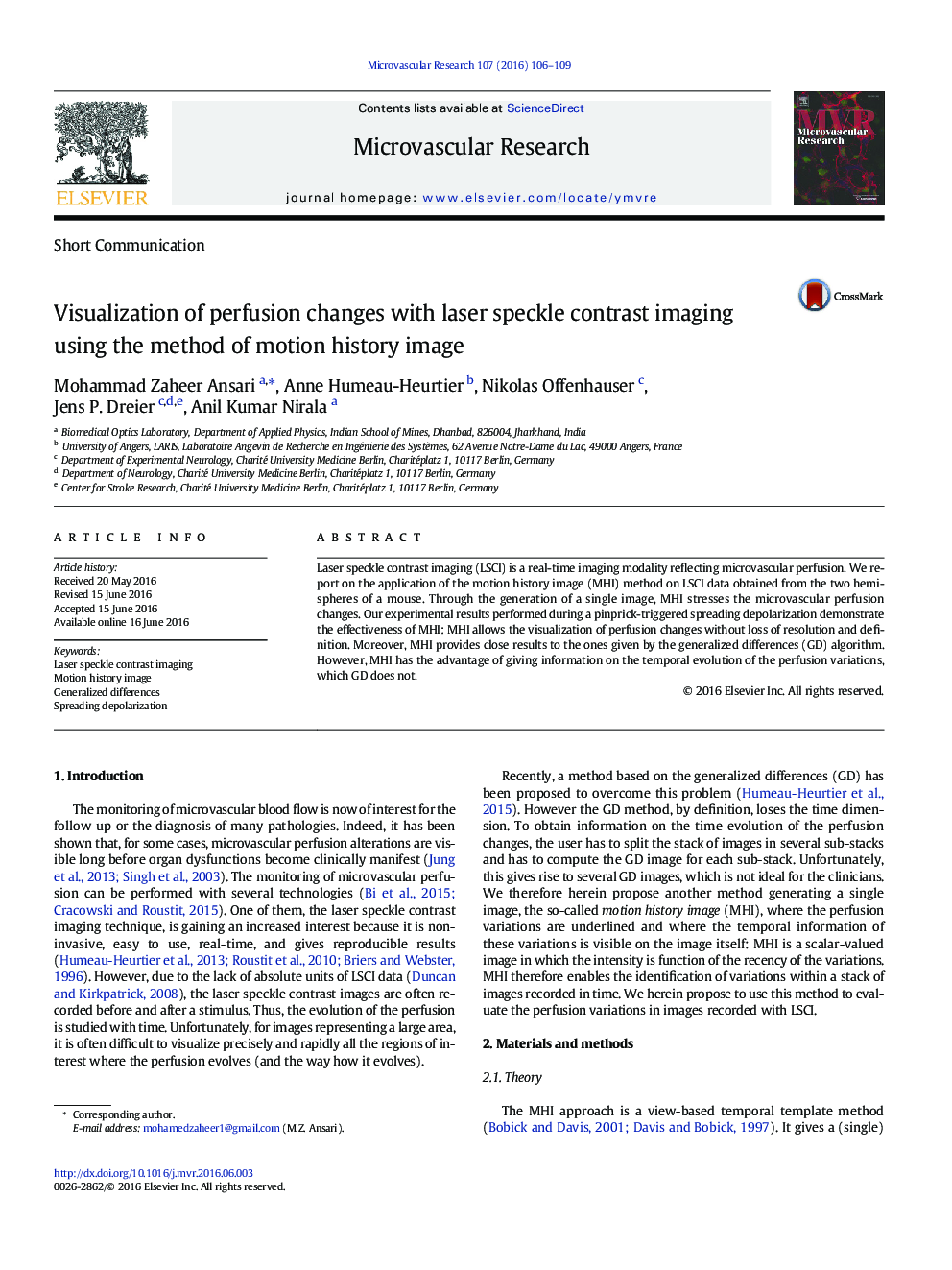| Article ID | Journal | Published Year | Pages | File Type |
|---|---|---|---|---|
| 1994686 | Microvascular Research | 2016 | 4 Pages |
•Laser speckle contrast imaging (LSCI) is a technology to monitor microvascular flow.•LSCI gives microvascular perfusion in arbitrary units. Stimuli are therefore used.•We propose motion history image (MHI) to easily visualize perfusion variations.•Results are compared with those given by the generalized differences (GD) algorithm.•MHI over-performs GD: it informs on temporal perfusion evolution, which GD does not.
Laser speckle contrast imaging (LSCI) is a real-time imaging modality reflecting microvascular perfusion. We report on the application of the motion history image (MHI) method on LSCI data obtained from the two hemispheres of a mouse. Through the generation of a single image, MHI stresses the microvascular perfusion changes. Our experimental results performed during a pinprick-triggered spreading depolarization demonstrate the effectiveness of MHI: MHI allows the visualization of perfusion changes without loss of resolution and definition. Moreover, MHI provides close results to the ones given by the generalized differences (GD) algorithm. However, MHI has the advantage of giving information on the temporal evolution of the perfusion variations, which GD does not.
